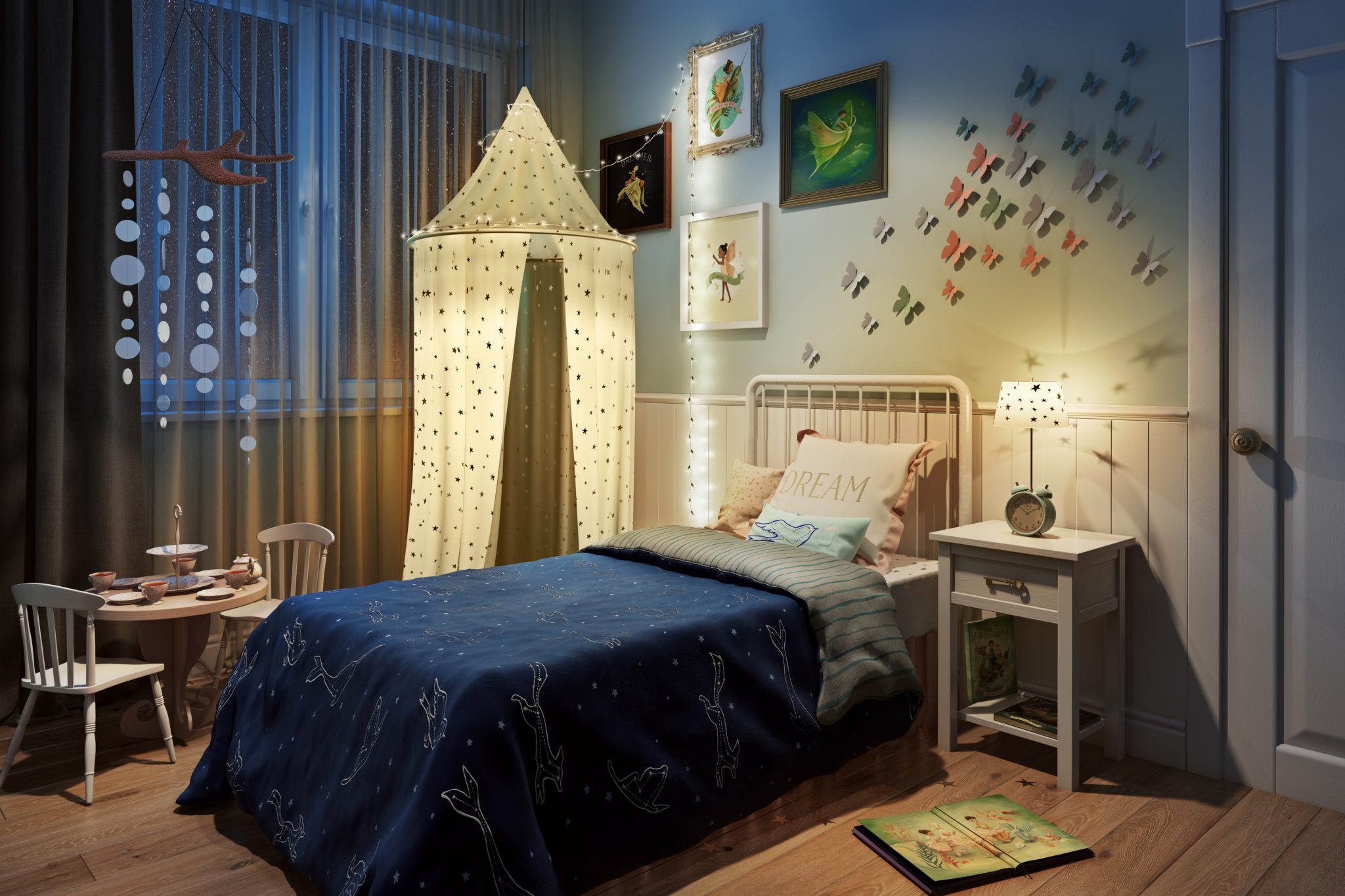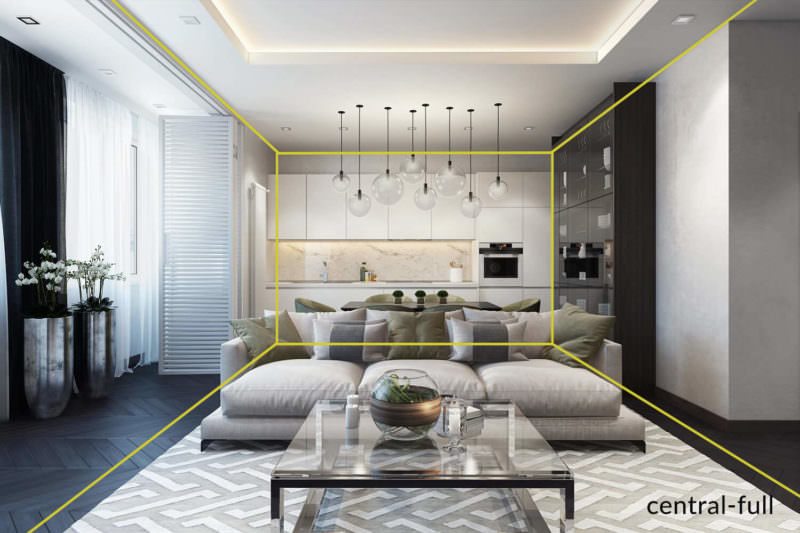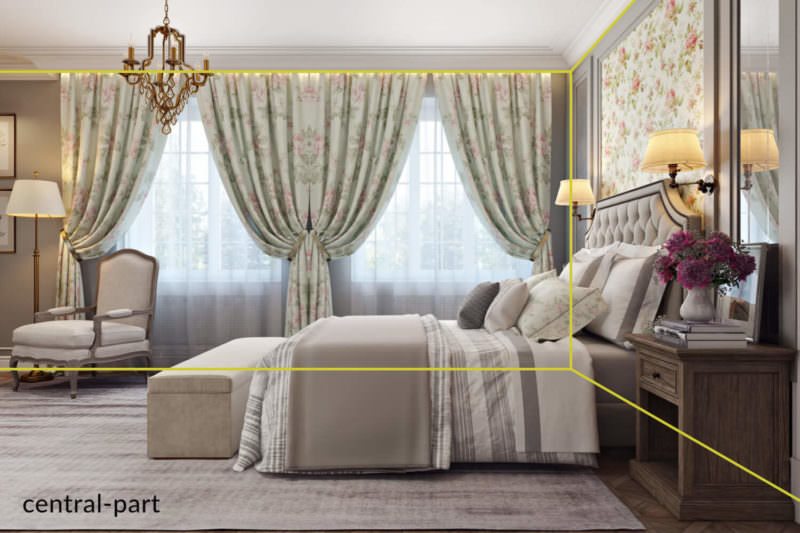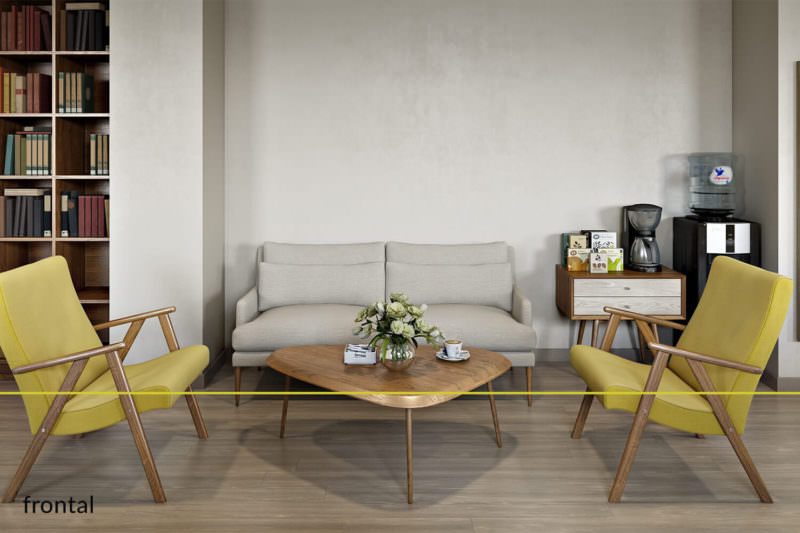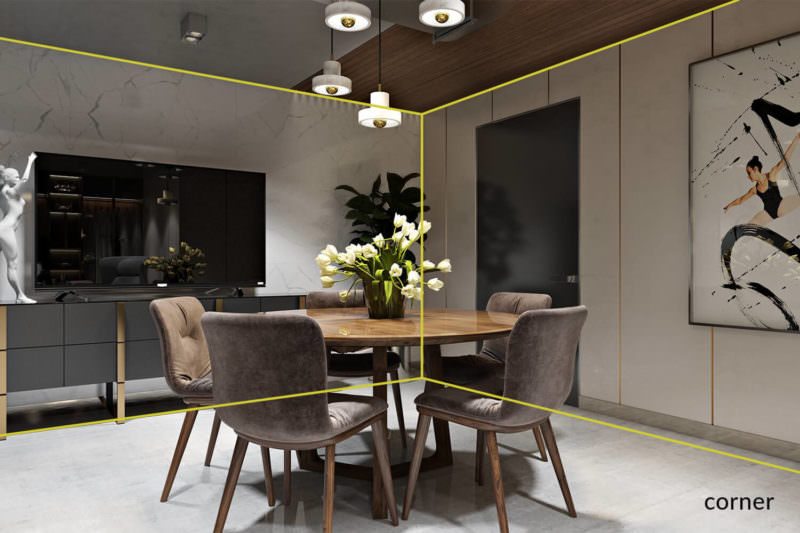Three-dimensional rendering is no longer a mere way to transmit the information digitally but a form of art. High-quality renders look just as realistic as the photos themselves. Moreover, they convey the atmosphere, tell stories and evoke emotions. Which is why Architects and Interior Designers use Architectural Rendering for their project presentations. But how comes that 3D renderings can be so impactful, appealing and accurate? Let’s learn 5 main tools using which 3D Artists create photorealistic images and breath life into the accuracy of a 3D rendering.
Three-Dimensional Rendering As A Form Of Art: 5 Means For Creating A Convincing Picture
#1. Composition A: Perspective
Choice of perspective is crucial for a successful Three-Dimensional Visualization. The thing is, it allows to showcase the best features of the Interior and Exterior Design. Each perspective highlights a feature of the project that the audience could not appreciate otherwise.
For Interior Design Three-Dimensional Renderings, 3D Artists usually use one-point perspectives:
He uses these types of perspective for Exterior three-dimensional renderings as well, plus a two-point perspective:
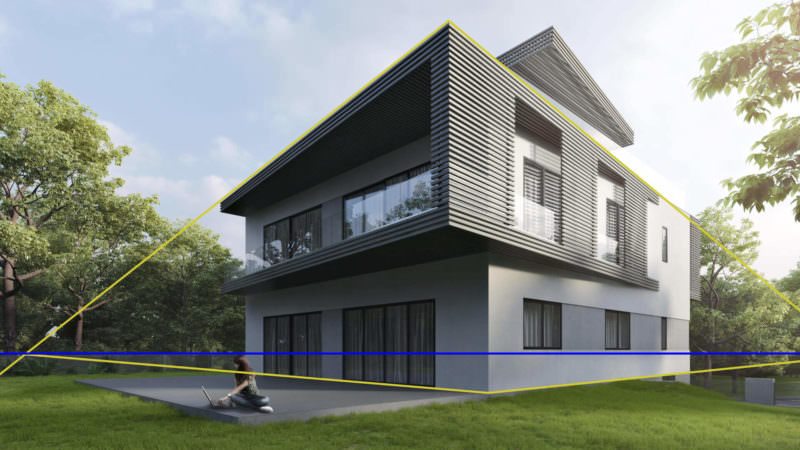
#2.Composition Part 2: Rule Of Thirds In A Three-Dimensional Rendering
To get an impactful rendering, 3D Artist uses the rule of Thirds. This allows him to:
- achieve balance
- highlight all the right parts of the interior and exterior designs
- create the needed symmetry
- evoke a feeling of comfort
According to the Rule of Thirds, the three-dimensional rendering is divided into 9 equal parts by 4 lines, 2 going across and 2 – down.This way, 3D Artist gets nine squares of focus. He places the most important parts of composition along those lines and near their intersection points. So the nearer the object is to the intersection, the more attention it attracts.
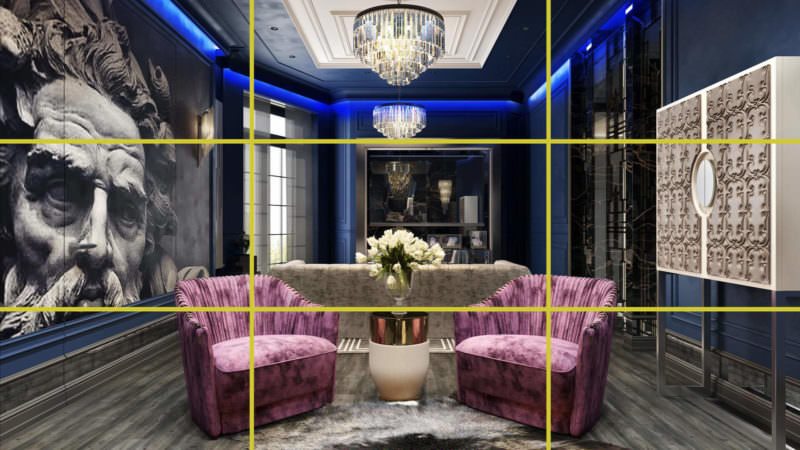
The Architectural three-dimensional rendering above is a great example of how much this rule affects the beauty of an image. Look how the elements are placed along the grid.
Between The Lines Of A Three-Dimensional Rendering
Along vertical lines are situated a window and the doorframe which make the ceiling look higher. The horizontal ones mark the division between the plans – the rear, middle and front. So along them, the 3D Artist places the physical objects that serve as borders – the top lines of the sofa and TV.
The Heart Of Composition
In the center of the rendering, we see a TV, a bouquet of white tulips and a sofa. The position of TV and its reflective service give additional depth to the image. It reflects the room, with its black luxurious marble and splendid chandeliers, thus creating a feeling of additional space.
The bouquet is both beautiful and functional. Elegant and fresh, flowers attract the eye and anchor the viewer in the real space. They outbalance the virtual corridor on the other side of the room and contribute to the feeling of symmetry and comfort.
In The Spotlight
What are the most eye-catching items in the three-dimensional rendering? That’s right – two purple chairs. For they are situated in the most conspicuous positions – at the intersections of the lines. It’s a perfect place for a color accent, so their noble washed-out coloring stands out from the black-and-navy surroundings.
That was the example of the Interior Design Renderings. Now observe how the Rule Of Thirds works for the Exterior Architectural Rendering.
Different views, different angles. And using The Rule Of Thirds, the 3D Artist created different accents.
Take your design presentation to a new level with interior rendering
#3. Lighting For A Photorealistic Three-Dimensional Rendering
Lighting often makes a three-dimensional rendering a failure or success. It has a huge impact on how bright the colors are and how the materials look. And most importantly, it defines the overall atmosphere of the rendering.
This is where the job of the 3D Artist is similar to that of a painter. To create a realistic lighting, he must observe it in real life and in photos. And then pick the right instruments in a rich palette of the rendering software, such as Spot Light, Area Light, Ambient Light, Directional Light, Volume Light.
The right lighting shows the interior and exterior designs at its best: restaurant room – in the glimmering evening light, kitchen – bathed in the sunlight coming through the french windows, and a shopping mall – ablaze with evening illumination. If the Designer or Architect is in doubt about which lighting to choose for the three-dimensional rendering, he should think of the time the project is most likely to be used. That would be the best time to capture it from the commercial point of view.
#4. Quality 3D Modeling For A Realistic Architectural Rendering
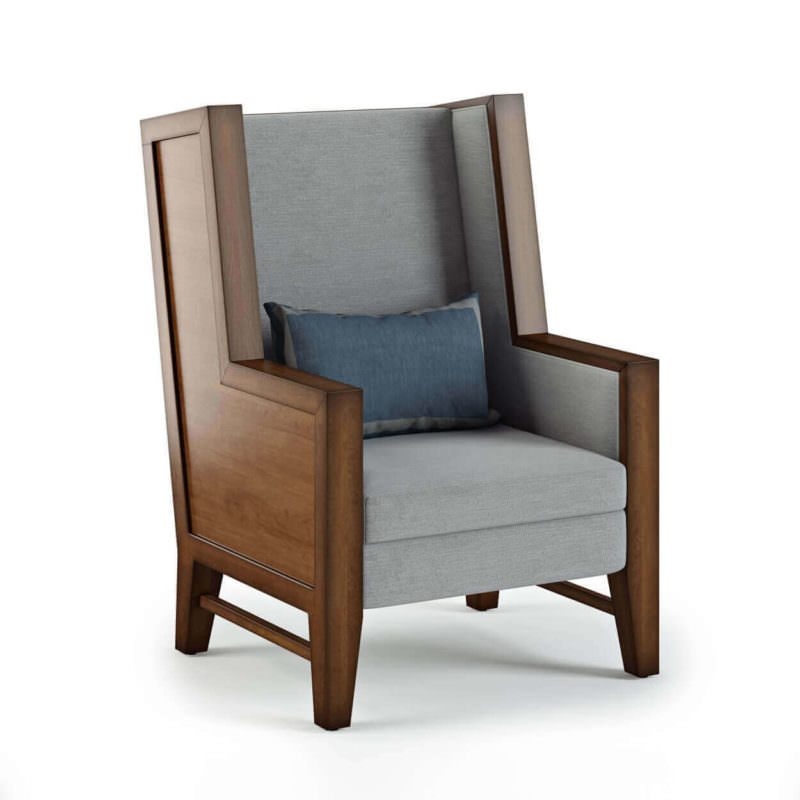
Though 3D Modelling is a separate type of art, it has a vital importance as a part of three-dimensional rendering. Realistic furnishings and details make the picture indistinguishable from a photo and appealing to the eye.
Creation of 3D Model takes a lot of time and stamina. Basically, the main thing is to choose the right proportions, create fine detailing, make the texture look realistic, work on glossiness and reflexion of the material. And when the green velvet sofa or wooden chair needs to look slightly weathered – apply dirt maps.
When the Architectural Rendering requires especially high realism, it makes sense to delegate this task to a 3D Modeler. He might choose to use 3D sculpting for higher accuracy and impact, while 3D Visualizer does what he does best.
#5. Post-Production Tools For Storytelling In Three-Dimensional Rendering
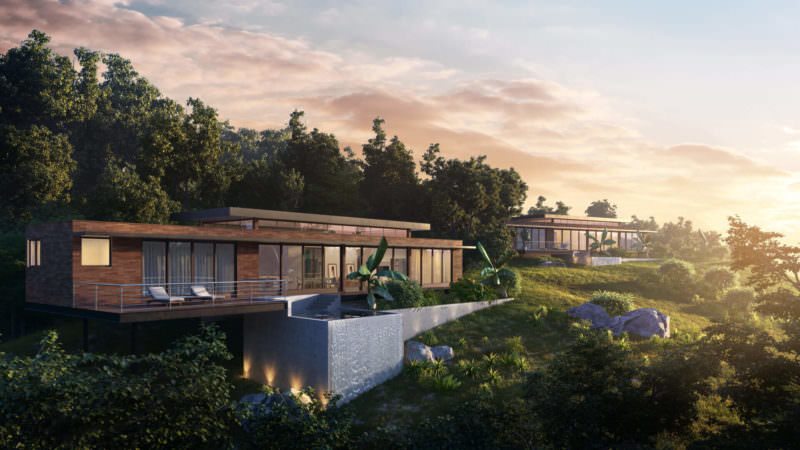
Three-dimensional rendering is more than realistic image showing the interior and exterior designs before they even exist. Nowadays, it’s an asset for selling a project. And as such, it shows the product from the point of view of its benefits to the user. And that is exactly what post-production is excellent at.
Need to add some more drama to the render? 3D Artist tweaks the lighting and brings out the textures. Want to have a sports car dashing along the road? He adds the Car 3D Model and applies Motion Blur for more impact. Need to make the Shopping Mall more appealing to investors? Then, 3D Artist adds figures shoppers having nice time or busily rushing along the corridor.
Showcase your architectural project like a true work of art, brought to life with cutting-edge AI-powered CGI technology.
And these are only 5 main tools out of the rich toolkit of a 3D Artist. An experienced specialist is capable of creating amazing three-dimensional renderings – life-like and emotional. To get quality Architectural Rendering Services, contact ArchiCGI. We’ll make sure your rendering tells the story of your product, conveys the right atmosphere and present the design with style.

Catherine Paul
Content Writer, Editor at ArchiCGI
Catherine is a content writer and editor. In her articles, she explains how CGI is transforming the world of architecture and design. Outside of office, she enjoys yoga, travelling, and watching horrors.


